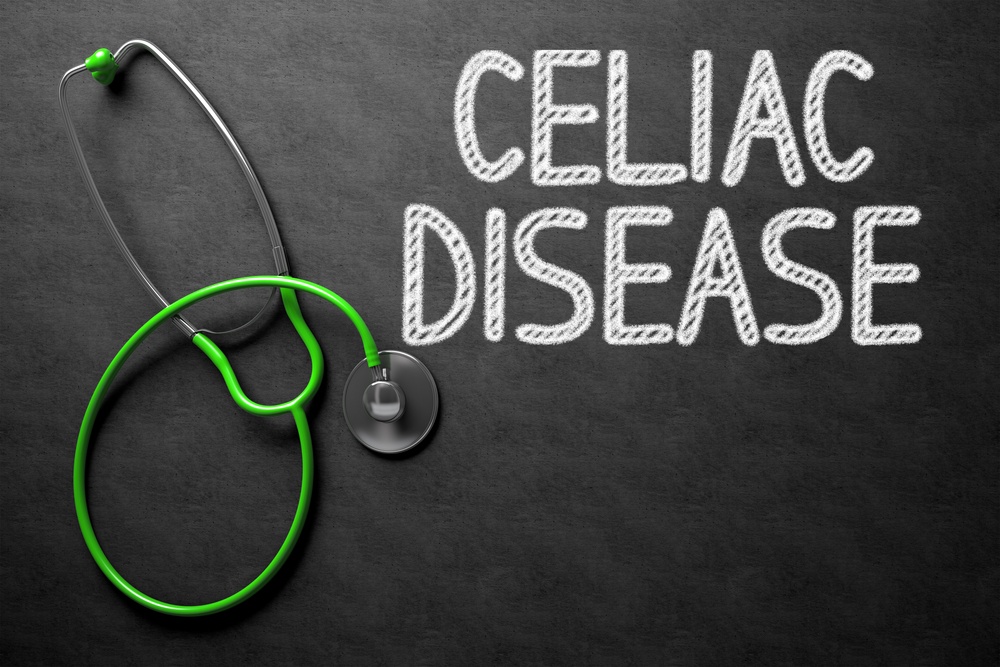



Get new exclusive access to healthcare business reports & breaking news




The number of people affected by celiac disease has been increasing and the medical world has become more aware and knowledgeable about the disease. According to the Celiac Disease Foundation, today, 1 out of every 100 people around the world are affected by celiac disease.
With such a common disease, it’s important to have a clear understanding of what celiac disease is, how it affects the human body, how to identify it, and how to treat or manage the disease and its symptoms.
What happens when one has the autoimmune disease
Celiac disease is often misrepresented as a simple “gluten allergy” or “gluten intolerance”. Operating under this oversimplified description of the disease vastly minimizes its impact on the body. Celiac disease, in the simplest of terms, is an autoimmune disorder, whereby the body’s own immune system attacks itself, causing damage.
When an individual with celiac disease ingests food containing gluten, the gluten travels down the esophagus into the stomach, then into the small intestine. There, body’s immune system begins an attack on its own small intestine in reaction to the presence of the gluten.
This attack damages the lining of the small intestine, specifically the villi, which then inhibits the body’s ability to absorb nutrients. When someone with celiac disease consumes gluten, their body attacks itself, damages the small intestine, and prevents needed nutrients from being absorbed into the body. When nutrients aren’t absorbed, this can cause a chain reaction of symptoms along the entire body. We’ll explore the direct and indirect symptoms of celiac disease later on.
The villi are small, stringy projections on the lining of the small intestine. They basically look like tiny, spindly, legs. Their primary function is to absorb nutrients. When the presence of gluten causes an autoimmune reaction, the body’s cells attack the villi, which then atrophy, and can no longer absorb nutrients.
Many people have full-fledged celiac disease; others have non-celiac gluten sensitivity. This latter condition is less serious than the actual disease, but still brings about challenging symptoms to the body.


What is gluten, then?
Gluten is the term used for the various specific proteins found in wheat, barley, and rye. These proteins work to hold a food’s shape and to keep foods together, functioning almost like a glue.
Wheat, barley, and rye are commonly found in a wide variety of food sources, from breads, to pastas, beers, sauces, soups, baked goods, and cereals. These are base food sources, found in nearly every meal from breakfast to dinner.
Understanding the causes and symptoms
As previously mentioned, celiac disease can cause a range of symptoms in the body, as a result of the autoimmune reaction to the presence of gluten. The body reacts to the autoimmune disease itself, but it also responds to the effects of the dietary challenges.
Symptoms of celiac disease can vary from person to person, depending on the severity, how long it’s been left untreated, and how frequently or infrequently they consume gluten. Some experts estimate that as many as 300 symptoms might exist for celiac disease, although no one person experiences that many.
Looking for some of the most commonly occurring symptoms of the disease helps establish a potential diagnosis.


















In children, symptoms might be a little different, but there are still quite a few similarities. These include: nausea, vomiting, swollen abdomens, increased gas and constipation, and pale-colored stools. In addition to these abdominal symptoms, children with celiac disease might also show irritability, stunted growth, damaged tooth enamel, and delayed onset of puberty. Even neurological symptoms, such as learning disabilities, attention disorders, and headaches or migraines might be present.
As mentioned, symptoms in children vary slightly, and often don’t include the same symptoms as those of adults. Part of the basis for this discrepancy has to do with an older individual who has had the disease for a longer period of time. As a result, their body has been subjected to the symptoms longer. It’s far more dangerous to the body to experience the lack of nutritional and intestinal damage over the years. Symptoms also vary depending on how long the disease has been inhabiting the body and how much damage has been done during that time.
What sometimes makes celiac disease even more difficult to diagnose in both children and in adults is the fact that while some individuals experience many of these symptoms, other individuals don’t experience any of them. This is the difference between symptomatic and asymptomatic celiac disease.
Research shows that as many as two and a half million Americans currently have undiagnosed and untreated Celiac disease. Lack of awareness of the disease, the wide-range of symptoms associated with it, and misdiagnoses all contribute to this significantly high number of undiagnosed individuals. On a global scale, some studies show that as many as 50-90% of people with the disease may be undiagnosed. Though it’s a wide range, both reflect huge numbers of the population.
The dangers of such a high number of people not receiving treatment or management for their disease is significant because of the health issues that result from long term, untreated Celiac disease.
Internal damage caused by the lack of nutrient absorption, damage to the villi, and damage to the small intestine, as well as concern about the development of other significant diseases cause some of the strongest concerns about untreated Celiac disease.
Research indicates untreated Celiac disease can lead to: diabetes, coronary artery disease, colon cancers, multiple sclerosis, nerve damage, gastrointestinal infections, intestinal lymphomas, and other autoimmune disorders.


While only about one fourth of diagnoses are under the age of 12, the earlier a diagnosis is made, the less damage the disease is able to do on the body. This early diagnosis also decreases the chances of another autoimmune disease developing later in life.
Most individuals who are diagnosed with celiac disease find themselves receiving diagnosis and seeking treatment or management around their 40’s, 50’s, and 60’s. However, experts predict that this age average will go down, as awareness of Celiac disease and its symptoms rises, thus increasing diagnoses in those who are younger.
Because celiac disease is an autoimmune disease, individuals who already have other autoimmune disease have a higher probability of being diagnosed with celiac disease.
Likewise, individuals who develop celiac disease also are more prone to be diagnosed with other autoimmune diseases.
Some sources question the rise of a celiac disease diagnosis, and attribute it to more than simply an increasing awareness of the presence of the disease. According to an article in the New York Times, over 20,000 blood samples collected and tested from 1948 to 1954 were tested and only .2% showed signs of celiac disease. More current blood samples indicate an increase four times that.
One theory is that, as farming and pharmaceuticals have changed the way wheat is processed-accompanied by the increased presence of gluten in medications, the body is facing an unprecedented overload of gluten.
GMOs and newer farming practices are changing to increase efficiency and satisfy changed climates, which might be altering the composition of these products.


Because of the wide range of symptoms, and the fact that some individuals have a symptomatic case while others have asymptomatic Celiac disease, it can be difficult to find a diagnosis. If you find yourself experiencing some of the common or less common symptoms, it might be time to visit your doctor to determine a diagnosis.
Typically, medical diagnosis of Celiac disease involves a biopsy of the inside of the small intestine, where the villi are found and where the autoimmune disorder reacts. Often, this also includes a blood test to aid in confirming the diagnosis. Some doctors might even perform genetic testing to help confirm findings.
In an effort to assist with diagnosis, Imaware™ can also be extremely beneficial in finding a diagnosis. Imaware™ can not only help test for specific key biomarkers indicating Celiac disease, but it is also an excellent way to help monitor the disease once a diagnosis has been confirmed. By empowering patients to take control of their own health, Imaware™ can help a patient work with medical professionals to diagnose, treat, and manage the symptoms in an effective and efficient way.
Although there is no cure for Celiac disease, treatments and management can have a huge impact on quality of life
Diet is the primary course of treatment for individuals who find themselves with a diagnosis of Celiac disease. There is no medication or prescription that can be given to individuals with the disease. As a result, the primary course of treatment relies entirely on maintaining a completely gluten-free diet.
Doctors will recommend an entirely gluten-free diet, but that can be a challenge for many, because it requires constant awareness, strict adherence to special diet foods, and lifestyle changes. Even minimal amounts of gluten in foods can be damaging to those with the disease, which means a hyper-awareness of the compounds in foods is necessary.
Because even the smallest amount of gluten can trigger an autoimmune response in the small intestine, it’s crucial for those with the disease to feel comfortable and confident in social settings where they might feel pressure. For example, an individual offered a slice of cake at a wedding, might feel uncomfortable or rude to refuse it.
It can be intimidating to begin a diet that can seem restrictive, but the good news is that the increasing level of diagnosis of the disease means that more and more restaurants and shops are providing consumers with gluten-free options. The increasing appearance of “Gluten-free” labels, means that it is becoming ever more possible for those with Celiac disease to live and eat in a way that satisfies their dietary restrictions.
Aside from the biggest challenge of avoiding certain foods that contain any amount of gluten, a secondary challenge for many individuals is finding balance with their diet. With so many foods necessarily eliminated, it takes more conscious effort to ensure one’s diet still contains needed nutrients and a balance of foods to stay healthy.
When balance is not achieved, for instance when an individual cuts out all gluten-containing products but does not institute greater dietary variety (all fruits or vegetables, high-meat, etc…) it can Celiace disease can continue to damage the body because of the lack of nutritional balance. Malnutrition, and the symptoms that result from malnutrition, still present a risk when careful consideration of dietary habits is not conducted.
For this reason, it can be crucial to consult with a dietician or doctor to find the right approach to managing one’s individual symptoms. Traditionally gluten-free foods: vegetables, fruits, legumes, meats, and some whole grains (such as quinoa and brown rice), can be integrated into one’s diet with moderate ease.
The traditional foods that used to be on the ‘avoid’ because of gluten content are now commercially produced without gluten. These include gluten-free breads and bagels, pizzas or pastas. These can help give the feeling of a more normalized diet. They also can provide balance within diets and aid in maintaining nutritional consumption of foods.
Working with professionals, finding common communities, conducting thorough research, and maintaining self-awareness of one’s own disease can all help support a healthy, gluten-free diet and lifestyle.
Celiac disease is an autoimmune disease wherein an individual’s small intestine reacts to the presence of gluten, damaging the villi on the internal lining of the small intestine, and triggering a wealth of other symptoms. It can be found in children as well as adults, although many individuals may go years or decades without receiving a diagnosis.
Symptoms vary significantly from case-to-case; although some may experience many symptoms, others might experience none at all. They range from gas, bloating, constipation, diarrhea, itchiness and skin rashes, anemia, to headaches or migraines, osteoporosis, and fatigue, to name a few.
Without diagnosis and treatment, these symptoms can have long-term, further damaging effects on the body. Other autoimmune diseases, diabetes, neurological disorders, and general weakness as a result of malnutrition are all potential dangers.
Celiac disease is often a predisposed, genetic condition, commonly found in family members. Millions of cases go undiagnosed, as a result of the wide-ranging symptoms, lack of awareness of the disease, and misdiagnosis of symptoms.
Although there is no cure for Celiac disease, it is becoming increasingly manageable for those who have been diagnosed. Treatment includes complete dietary avoidance of all food or beverage products containing any amount of gluten. Individuals who show one or more of the symptoms should speak to their doctor about a diagnosis, because earlier detection leads to less long-term damage to the body.